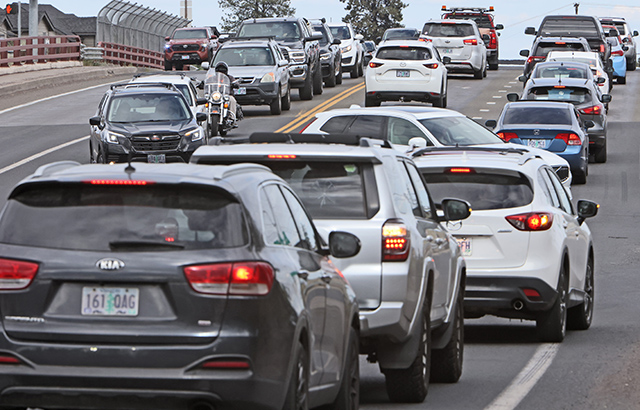Column: No sanctuary for area’s homeless
Published 12:00 am Friday, March 30, 2018

- (Joe Kline/Bulletin file photo)
Oregon is a sanctuary state, thanks to a law approved by the state Legislature in 1987. It was approved, in part, because of the humiliation of a legal immigrant from Mexico 10 years earlier. The man sued, won, and his lawyer later was elected to the Legislature. What happened there is history. Oregon bars the spending of state or local dollars to enforce federal immigration laws if a person’s only crime is arriving here illegally.
Would that the state’s homeless people were so lucky. They’re not.
Trending
While the federal government may not come after the 14,000 or so homeless people living in Oregon, local governments have more than made up for it.
In Salem, police have moved homeless people out of informal camps several times this month; Tigard officials took a similar action in January, as have Portland police more than once. And Roseburg, with only about 21,000 people, got into the act last summer.
Central Oregon has done its part. While rousts generally haven’t been as visible as they have in Portland and Salem, they’ve been an ongoing thing. Woe betide the homeless man, woman or family whose secret hiding place is discovered by the neighbors or the police — before long, they’ll be moved along, like it or not.
That was true of the 250 to 400 folks near Redmond who were “persuaded” to leave land owned by the county, the Redmond School District and Central Oregon Irrigation District last year. Roads were blocked, trapping some on the outside and others, with their vehicles, on the inside.
Some of those trapped had jobs, and without vehicles, they likely had trouble getting to those jobs. Some may have lost those jobs as a result, leaving them not only homeless but destitute.
Other times, police actions involve only a tent or two and a handful of people. But, as is the case when the number forced to move is much higher, it’s a hardship in lives that are exceptionally difficult.
Trending
Meanwhile, nearly 60 percent of the homeless in the tricounty area come from the tricounty area, according to last year’s point-in-time homelessness count. The last time they had a place to live, it was in Deschutes, Crook or Jefferson counties. Most are homeless for economic reasons, again, over half. Rents have increased beyond their means, or they’ve lost jobs or faced some other financial calamity.
The picture gets worse. Nearly 600 people were unsheltered, included 129 children. Children with no place to bathe, to brush teeth, to sleep safely and warmly have a darned hard time doing well in school, if they can get to school. And while some object to homeless people at county libraries because they’re dirty, they should think about how clean they might be under similar circumstances. Virtually every one of those numbers were up from 2015, some by 50 percent or more.
I think Oregon’s stature as a sanctuary state is a good thing. It’s humane, in my view, to treat others as we wish to be treated. On an economic level, we count on immigrants, legal or not, more than we care to admit for cheap food, home care providers, landscapers, and on and on.
Unfortunately, we don’t show the same humanity to those in the community with no place to live. Not only do we send police and others to drive the homeless out of our view and off land where, generally, they’re bothering no one, but we do almost nothing to improve their situations.
Cities may not be able to afford to get into the shelter business, to be sure. But cities could make it easier for creative solutions to the homelessness problem. Portland and Eugene have done just that, allowing homeless “villages” in some parts of town.
Other cities, including Bend, should get on board.
— Janet Stevens is deputy editor of The Bulletin. Contact: 541-617-7821, jstevens@bendbulletin.com








